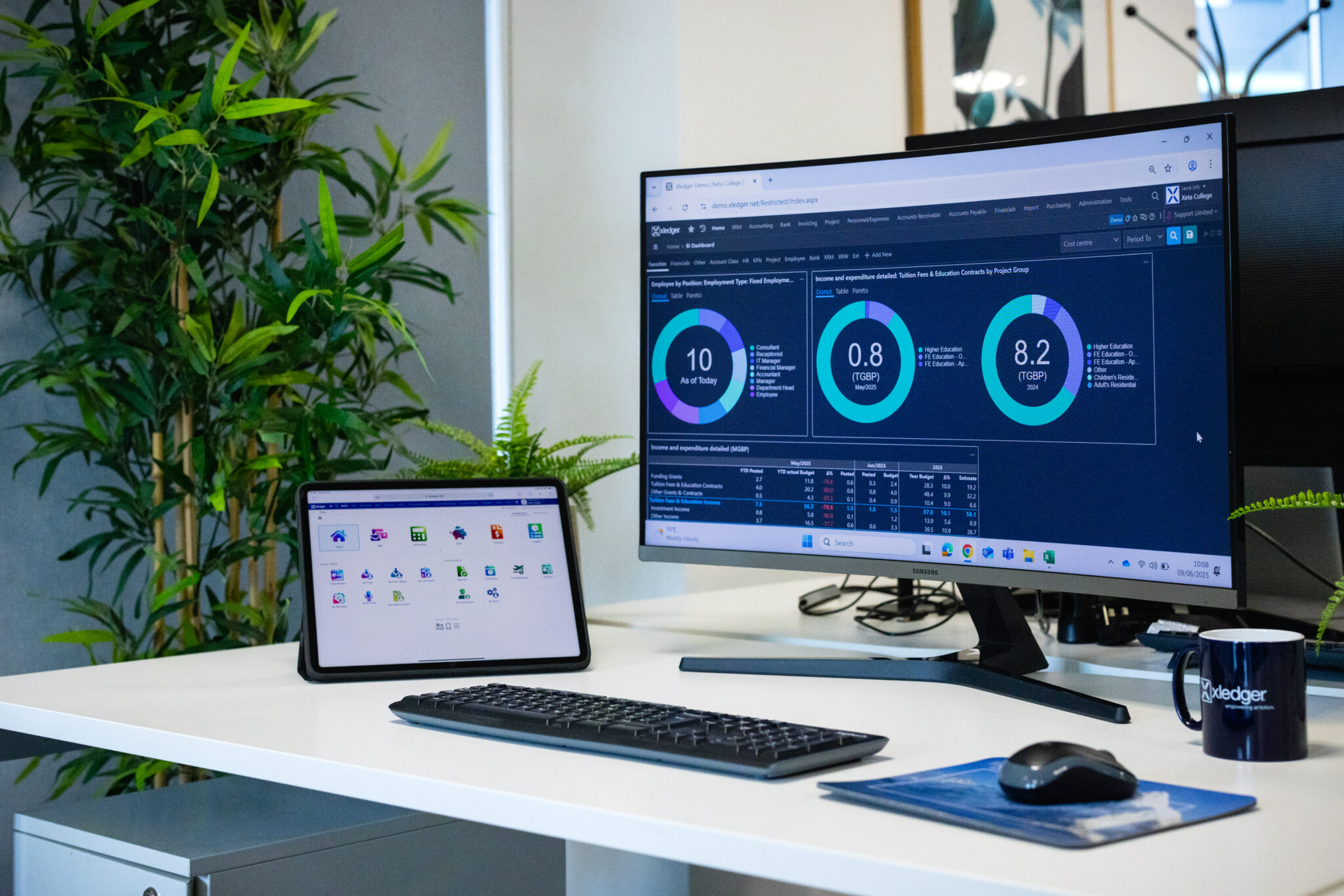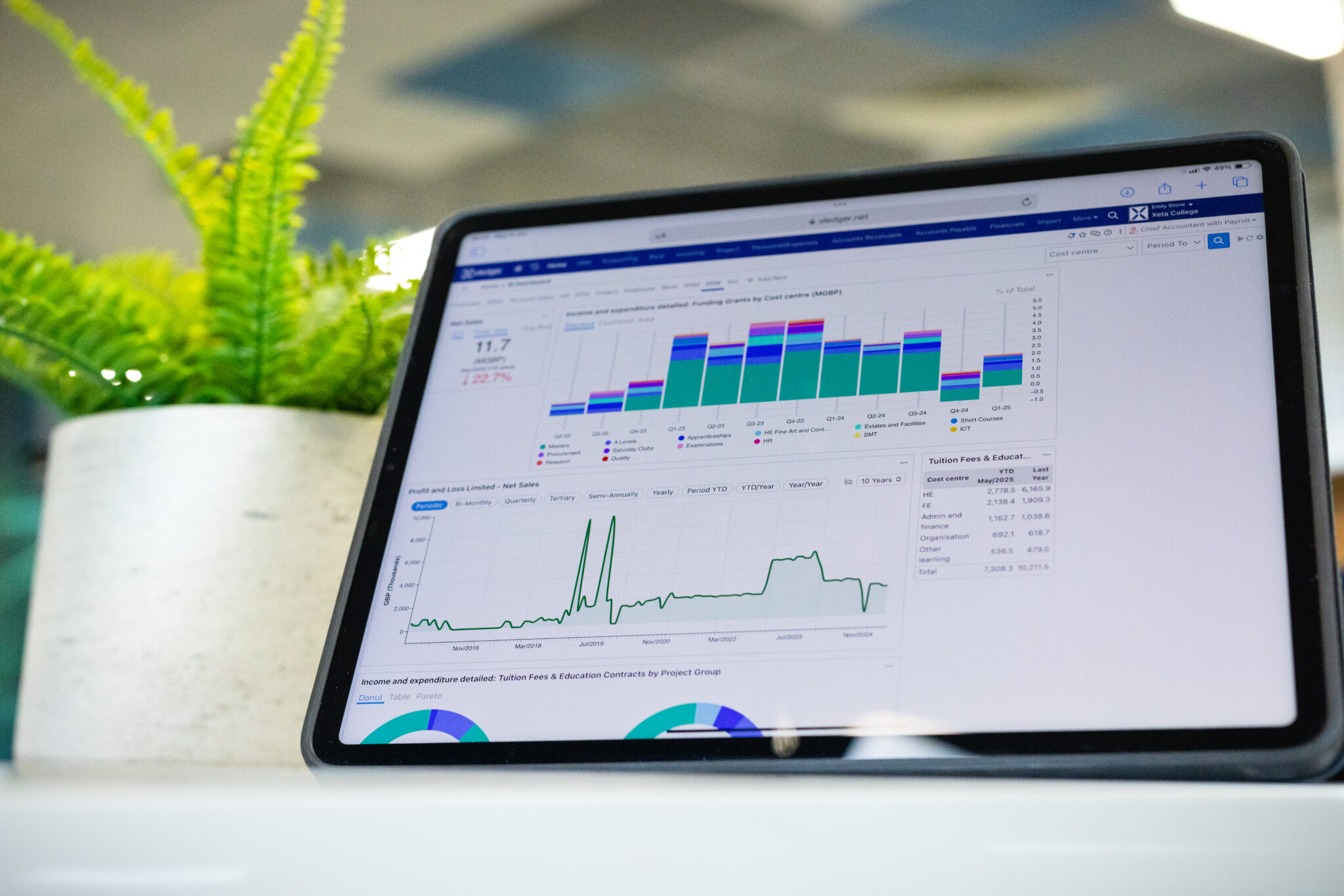Accounting automation allows finance teams to offer real-time insights by reducing the time spent on manual processes. It creates space for finance teams to advise and guide budget holders and finance leaders through crucial decisions.

Without accounting automation software, finance departments typically spend weeks pulling out data for month-end or annual reports.
When data is finally laid out comprehensively for relevant stakeholders, it is outdated. Accounting automation combats these time-consuming processes, enabling finance leaders to leverage their team’s time more strategically.
Therefore, accounting automation reduces time spent on manual processes, integrates various systems to consolidate data and, as a result, future-proofs a business for expansion into wider markets.
Xledger is a best-of-breed finance solution and has an in-built accounts payable/accounts receivable module. Contact Xledger to book your free demo or click here to learn how our accounting software can benefit your organisation’s financial management.
Accounting automation is key to streamlining accounting processes, and automated workflow tools help to reduce repetitive tasks and duplicated data extraction. By cutting back on time-consuming manual tasks, finance departments have more time to drill down into data and drive productivity.
Accounts payable (AP) and accounts receivable (AR) are essential finance functions. Too often, accounting experts have to complete a labour-intensive accounting process. Xledger boasts various functionalities; the built-in best accounts payable automation software manages the end-to-end process of AP/AR, and benefits finance functions through time-saving automation.
Xledger’s accounts payable and receivable module enhances your relationship with your suppliers and saves time by reducing manual data entry. It automates the AP/AR process and improves the accuracy of financial data by expediting payment cycles.
For example, Xledger can notify the appropriate user when invoice approvals and payments are due. This reduces costs as data is more accurate, and ensures that all accounts payable processes follow a structured, efficient workflow.
Tip: Integrated accounts payable automation software enables finance teams to manage vendors and invoice enquiries from a single flex-screen, making all accounts payable processes easier to manage.
Integrating finance software with an accounts payable module is a strategic move that benefits your finance teams. It streamlines complex accounting processes, purchase orders, profit and loss, among others. As a strategic partner, automated accounting systems save finance functions time so they can produce value-added guidance to budget holders and finance leaders.



AP automation solutions reduce demotivating tasks and ensure data is accurate, compliant, and traceable with full audit trails. For example, automated accounting software, like Xledger, makes posting a cost centre a mandatory action to ensure the purchase order follows the correct workflow.
As a standard, automated accounting software can also force users to balance journals, creating clean and accurate data. If data is compliant and accurate, accounting teams no longer have to trawl through endless figures to find inaccuracies — a lengthy and, too often, regular process with potentially large quantities of human errors.
Instead, accounting and finance teams can leverage their time by analysing data and offering valuable financial insight to key stakeholders and operations leaders.
Agile reporting capabilities are crucial for unlocking real-time business insights because they help present data through accessible, digestible, and consolidated visual aids.
For instance, month-end reporting is a complex and lengthy, albeit necessary, accounting responsibility. So, why not reduce the manual effort, team stress, and time needed to produce these reports by configuring pre-defined reports unique to your organisation? This way, less time is spent manually completing prepayments and deferred income.
“Key reports now allow teams to independently understand where they are with their spending without having to consult Finance, and overspend has been brought under control. Business decisions are being made easier and quicker, and the Finance team are adding more value to the business.”
Xledger has numerous configurable and pre-defined reports that users can tweak and configure so that data is presented in a way that works for finance teams, budget holders, boards of directors, and external stakeholders.
Dashboards play a significant role in presenting real-time data, particularly for budget holders and finance leaders, as these offer a real-time top-down view of various business subgroups, from projects to departments, and even single entities in a multi-entity business.
By automatically holding data in visual ways, dashboards act as a home base for financial experts who need to present the business’s financial health at any point to a variety of audiences.
Tip: Configurable dashboards are great data presentation tools when speaking to budget holders because complex data is shown through digestible visual aids, including pivot tables, pie charts, and graphs.
Each dashboard is configurable to suit each user’s role. From liquidity forecasts to profit and loss reports, data can be further broken down across projects, departments, or corporate entities.
This enables CFOs and finance experts to better inform boards of directors, and other key stakeholders in decision-making. Ultimately, wider access to an integrated accounting system gives immediate oversight to key stakeholders about business performance and financial health.
Automated accounting software built in the cloud, for the cloud, eradicates the cost of system updates and extra server space. On-premise systems typically require manual updates. However, a true-cloud solution ensures that businesses gain immediate access to regular updates, free of charge.
Tip: The best way to future-proof your finance system is a unified centre of software that can be scaled up or down as your business moves.
Likewise, Xledger’s true-cloud solution operates on a multi-tenant hierarchical structure. This structure easily expands as small businesses grow into larger markets where configuration and data flow down from the holding dashboard and consolidated data flows up from single entities.
As such, true-cloud solutions support expanding organisations that consist of multiple entities or contain multiple trading and non-trading arms.
True-cloud lends itself to the long-term scalability of a company and helps to future-proof the investment of a new finance system, as a new entity can simply be created with a few clicks on Xledger. As an organisation grows, it has infinite room to expand its finance system on true-cloud software.
Real-time data doesn’t simply appear. It is pulled from various systems that hold business and financial information, such as Customer Relationship Management (CRM) and Human Resource (HR) systems — systems that should speak to each other to build a cohesive overview of a business’s health.
This is where integrated Enterprise Resource Planning (ERP) systems come in. The power of integrated ERP software ensures that your business systems are unified, automatically consolidate data, and create a cohesive overview of your business’s health on your Xledger dashboard.
“For me, the integration with the bank for BACS is the big win — we are now working in the system. Things are flowing through far more quickly. It’s absolutely great in terms of how it works.”
Not only do integrated systems speak to each other, but they also activate time-saving automated processes that speed up the flow of transactional data, bank payments, supply-chain management, and payroll information.
If systems connect and consolidate data on Xledger without the need for manual data reconciliation, finance teams have more time to complete value-added accounting tasks like approval workflows and expense reports.
Integrations are easy to set up on Xledger, so the question to ask yourself is not “Is an integration possible?”, but rather, “How should an integration work for your business?” Ultimately, an integration should flex to suit your financial requirements, and this is possible through both native and custom integrations.
Our native integrations are built to comply with statutory legislation in mind, and each integration can be configured to achieve the type of real-time insight your finance department truly needs.
Through configurable native and custom integrations, Xledger’s accounting automation software links two systems together. For instance, intrinsic bank integrations link banking infrastructure to Xledger, creating seamless reconciliation between your business’s account and accounting software.
Additionally, Xledger’s integration consultants can help to deliver bespoke integrations that adhere to your business’s functional aims and overall goal. With a suite of feature-rich Application Programming Interfaces (APIs), our experts customise your integration to create a unified hub that speaks to over 1,000 market-leading applications.
Access to real-time insights is non-negotiable for organisations wanting to level up their financial operations. Implementing easy accounting software is a strategic tool to future-proof your finances.
There is always room for improvement when managing finances, and cloud-based software can be scaled to meet your business’s current needs. With automatic reporting at their fingertips, finance experts have more time to analyse and advise budgets and stakeholders.
To unlock real-time data insight for your business, book a free demo or contact one of our team with the details below.
Have any questions on Xledger’s finance software?
Get in touch with one of our dedicated team.



Xledger is a fully automated ERP system, we cover everything from core accounting to in-built expenses to project accounting, and much more. Find out more about what Xledger can do for your organisation.
